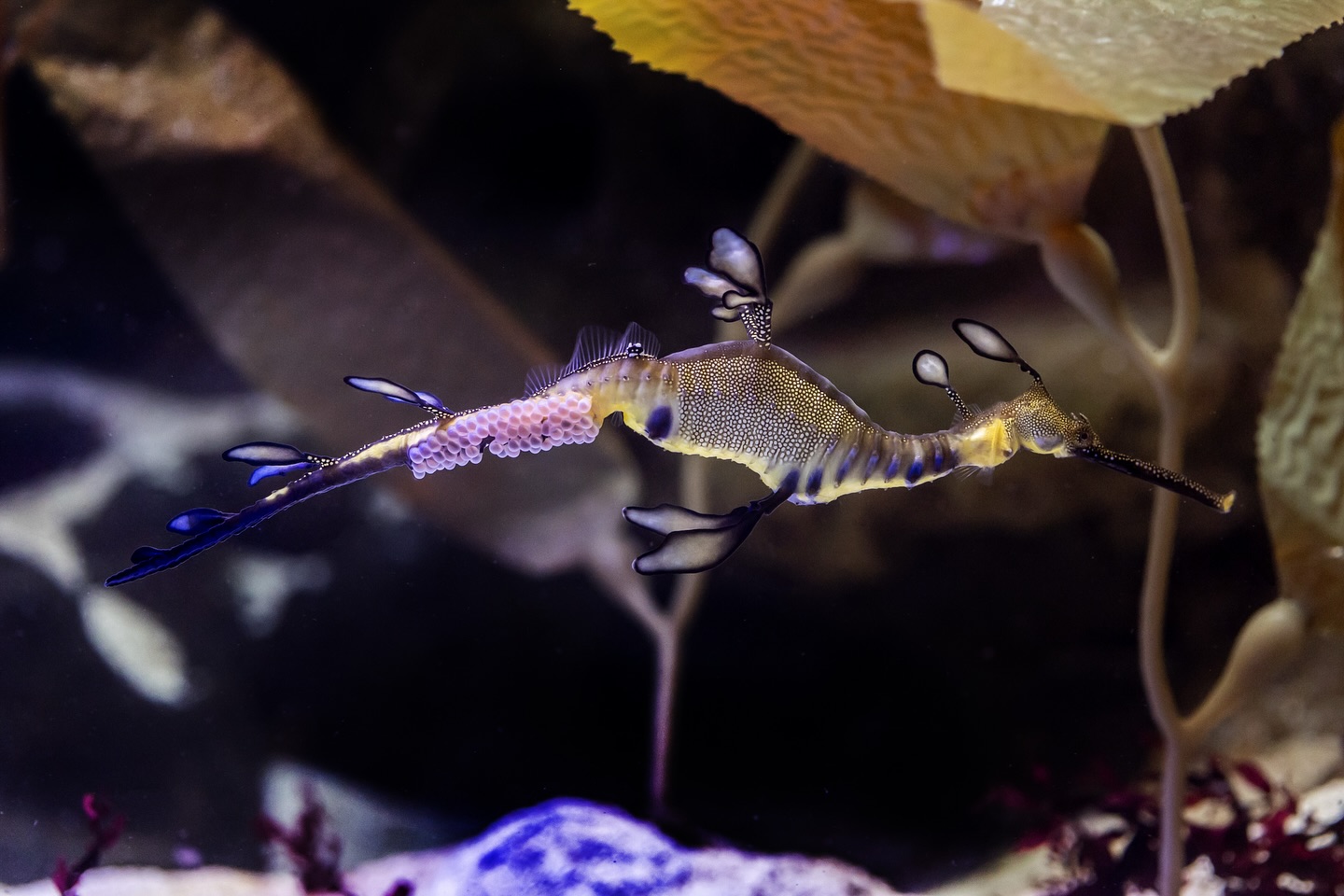- Male weedy sea dragon carrying eggs is a rare and significant event at Shedd Aquarium.
- The biological and behavioral traits of weedy sea dragons.
- The challenges and successes of breeding sea dragons in captivity.
- Conservation efforts and the importance of public awareness in marine life preservation.
- The role of aquariums in educating the public and protecting endangered species.
In the aquatic exhibit of Shedd Aquarium, a spectacle of remarkable rarity is unfolding. A male weedy sea dragon, a species renowned for its mesmerizing appearance and elusive behavior, is carrying eggs. This event is not only captivating but also one of the rarest occurrences documented in aquariums globally. On April 7th, a female sea dragon transferred approximately 70 eggs to the male. These fragile embryos now rest on a specialized brood patch located on the underside of the male’s tail, relying on him for their survival over the next six weeks. This transfer marks only the second successful egg transfer in Shedd’s history, highlighting the aquarium’s expertise in marine biology and conservation practices.
Weedy sea dragons, or Phyllopteryx taeniolatus, possess an intricate system of reproduction that sets them apart from many other marine creatures. Native to the southern and eastern coastlines of Australia, these ornate relatives of seahorses are known for their leaf-like appendages, which aid in camouflage amidst seaweed and kelp. Unlike many species, it is the male sea dragon that assumes the primary role in the care and protection of the eggs, a rare occurrence in the animal kingdom. The female passes the eggs to the male, who then fertilizes them. They adhere to his brood patch, a structure specifically evolved to support and oxygenate the developing embryos.
The successful breeding of weedy sea dragons in captivity transcends mere biological curiosity—it presents a formidable conservation challenge. In their natural habitats, these creatures face threats from habitat destruction, pollution, and climate change. Thus, breeding them in aquariums is as much about ensuring the survival of the species as it is about inviting the public to witness their beauty. Achieving a successful egg transfer and hatch in captivity involves replicating the sea dragons’ natural environment with exceptional accuracy. This includes maintaining precise water temperatures, salinity levels, and habitat structures that mimic the kelp forests of their native coastal waters.
Breeding programs such as those at Shedd Aquarium are crucial for conservation efforts. Increasingly, aquariums worldwide recognize their role in preserving marine biodiversity through captive breeding programs. These initiatives serve a dual purpose: they safeguard species from extinction and foster a deeper understanding of marine life among the public. By showcasing such rare events, aquariums inspire future generations to take an active interest in marine conservation and the protection of endangered species.
The spectacle of a male weedy sea dragon carrying eggs at Shedd Aquarium underscores the indispensable role that public aquariums play in conservation and education. Such facilities are not merely for display; they are vital forums for raising awareness about the delicate balance of marine ecosystems and the pressing challenges these habitats face. Visitors to the aquarium are afforded the opportunity to learn about the complex life cycles and ecological significance of marine organisms, fostering an appreciation that goes beyond superficial observation.
The male weedy sea dragon’s journey, from egg reception to potentially hatching new life, offers an illustrative narrative on the interconnectedness of marine conservation, public education, and scientific research. As aquariums continue to adapt and innovate in their approaches, they hold the potential to influence public sentiment and galvanize action towards preserving our planet’s precious marine environments. Witnessing this remarkable event firsthand serves as a poignant reminder of the delicate wonders our oceans hold and the collective responsibility we share in their preservation.
By maintaining ecosystems that mimic the species’ natural conditions and promoting awareness about such rare phenomena, institutions like Shedd Aquarium contribute significantly to global conservation efforts. Encouraging public engagement in marine conservation is more than education—it’s an inducement to action. The future of these enigmatic creatures, and many others, depends on our commitment to sustaining their natural habitats and understanding the ecological roles they play. For those fortunate enough to witness this rare occurrence in the aquarium’s confines, it offers a glimpse into the intricate and awe-inspiring world beneath the waves.
*****
Source Description
Something very rare is happening at Shedd! 🫢
And if you blink, you might miss it. 👀
A male weedy sea dragon is carrying eggs! In fact, it’s one of the rarest events in aquariums worldwide!
On April 7, a female sea dragon passed roughly 70 eggs to the male, who will now carry them on a brood patch located on the underside of his tail for about 6 weeks in hopes they’ll hatch. This is the second time ever in Shedd’s history a successful egg transfer has happened!
Tap the link in bio to plan a visit and witness this incredible moment up close!


